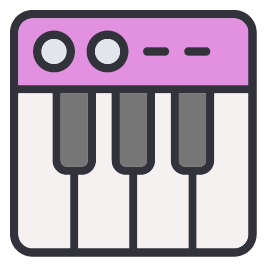For many pianists, the idea of sitting at the keyboard without sheet music feels… terrifying. No score? No structure? No idea what to play? It’s like standing on a stage with no script, no choreography, and no clue where to start.
But here’s the truth: this fear is normal — and it’s also the doorway to something beautiful. Playing without notes isn’t about showing off. It’s about showing up — for yourself, for your creativity, for your connection to music.
Let’s explore where the fear comes from — and how to move past it.
Why Is It So Scary?
There are several deeply ingrained beliefs that hold pianists back when it comes to improvising:
- “What if I play something wrong?”
Improvisation isn’t about right or wrong — it’s about real. “Mistakes” often become magic if you lean into them. - “I don’t know enough theory.”
Improvisation doesn’t start with theory. It starts with curiosity. Theory can help later — but it’s not required to begin. - “I need someone to tell me what to do.”
This mindset comes from years of playing what’s written. Improvisation teaches you to listen — not just to music, but to yourself.
Start With Trust
Improvising means trusting your ears, your fingers, and your instincts — even if they feel uncertain. This trust doesn’t appear overnight, but it can grow with practice.
Try this simple starter:
Choose just three notes you like.
Set a slow pulse with your left hand.
Improvise with the three notes — repeat them, space them out, change rhythms.
Listen to how they feel, not how they sound.
There’s no goal here. No product. Just play.
It’s About Exploration, Not Performance
One major mindset shift: you’re not performing, you’re exploring. You’re not being judged. No one is grading your creativity.
It’s okay to:
- Repeat yourself
- Stop and restart
- Sound messy
- Play one note for a full minute
Improvisation is a private conversation, not a public recital.
Create a Safe Space to Try
If the fear is strong, lower the stakes.
- Use a soft tone on your keyboard
- Play at night when no one’s listening
- Set a timer for 3 minutes and give yourself permission to just explore
The goal is not brilliance. The goal is freedom.
What Comes After Fear?
Freedom. Flow. Discovery. Joy.
Once you stop needing every note to be perfect, you start hearing music in new ways. You connect more deeply with rhythm, phrasing, color. You stop copying and start creating.
Improvisation turns the piano into a playground again.
You Already Have Everything You Need
You don’t need to be brave.
You don’t need to be advanced.
You just need to begin.
And each time you do — the fear gets quieter.
